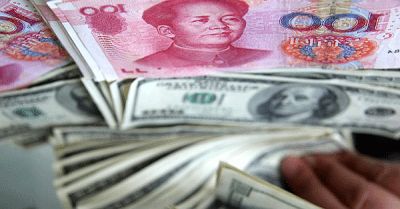 Charles Hugh Smith – History has shifted, and we’re leaving the era of central bank convergence and entering the era of central bank divergence, i.e. open conflict. In the good old days circa 2009-2014, central banks acted in concert to flood the global banking system with easy low-cost credit and push the U.S. dollar down, effectively boosting China (whose currency the RMB/yuan is pegged to the USD), commodities, emerging markets and global risk appetite.
Charles Hugh Smith – History has shifted, and we’re leaving the era of central bank convergence and entering the era of central bank divergence, i.e. open conflict. In the good old days circa 2009-2014, central banks acted in concert to flood the global banking system with easy low-cost credit and push the U.S. dollar down, effectively boosting China (whose currency the RMB/yuan is pegged to the USD), commodities, emerging markets and global risk appetite.
That convergence trade blew up in mid-2014, and the global central banks have been unable to reverse history. In a mere seven months, the U.S. dollar soared from 80 to 100 on the USD Index (DXY), a gain of 25%–an enormous move in foreign exchange markets in which gains and losses are typically registered in 100ths of a percent.
This reversal blew up all the positive trades engineered by central banks: suddenly the yuan soared along with the dollar, crushing China’s competitiveness and capital flows; commodities tanked destroying the exports, currencies and economies of commodity-dependent nations; carry trades in which financiers borrowed cheap USD to invest in high-yielding emerging markets blew up as currency losses negated the higher returns, and global risk appetite vanished like mist in the Sahara.

 For months, despite every shred of data pointing to a weaker economy, China’s currency has been strengthening.
For months, despite every shred of data pointing to a weaker economy, China’s currency has been strengthening.